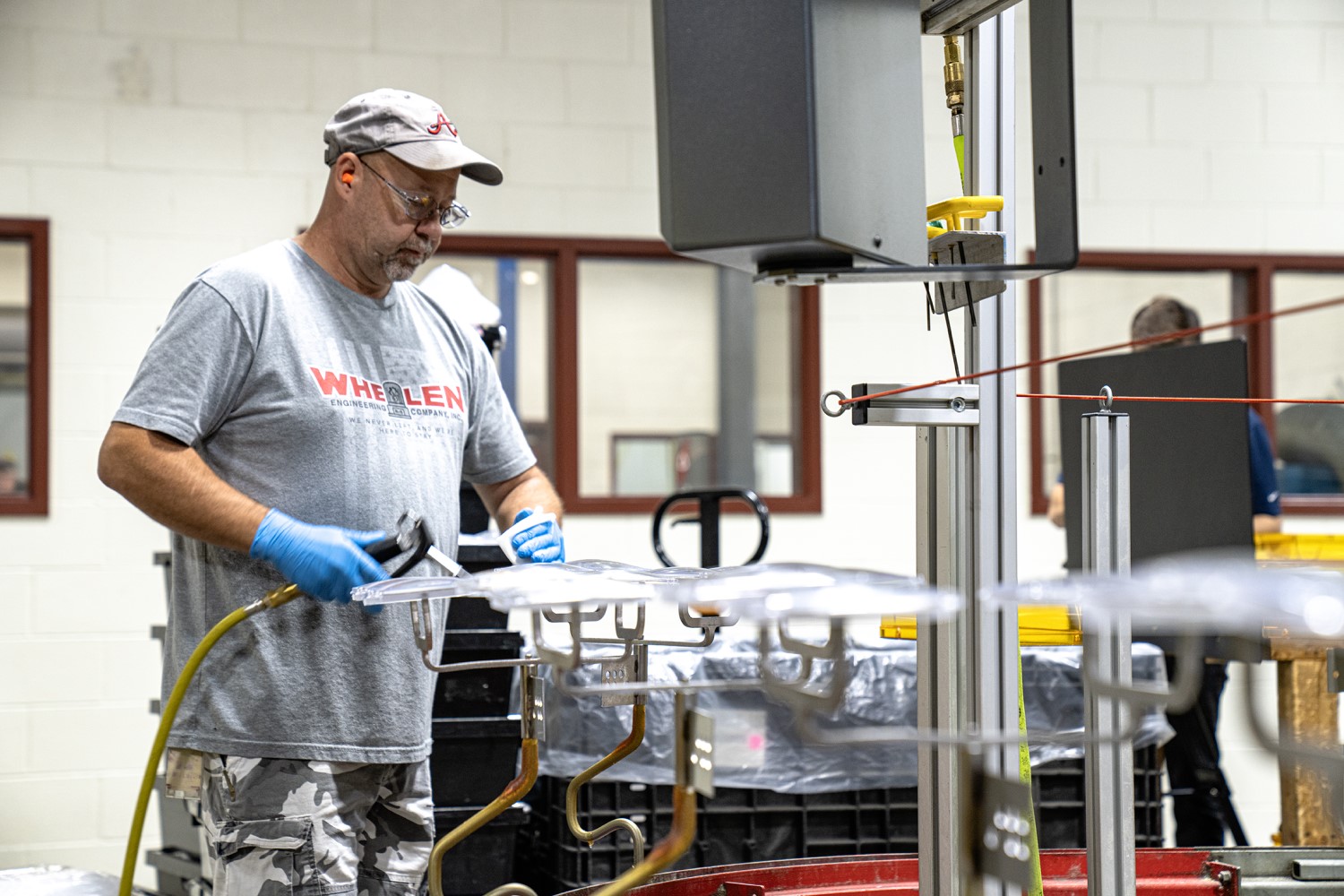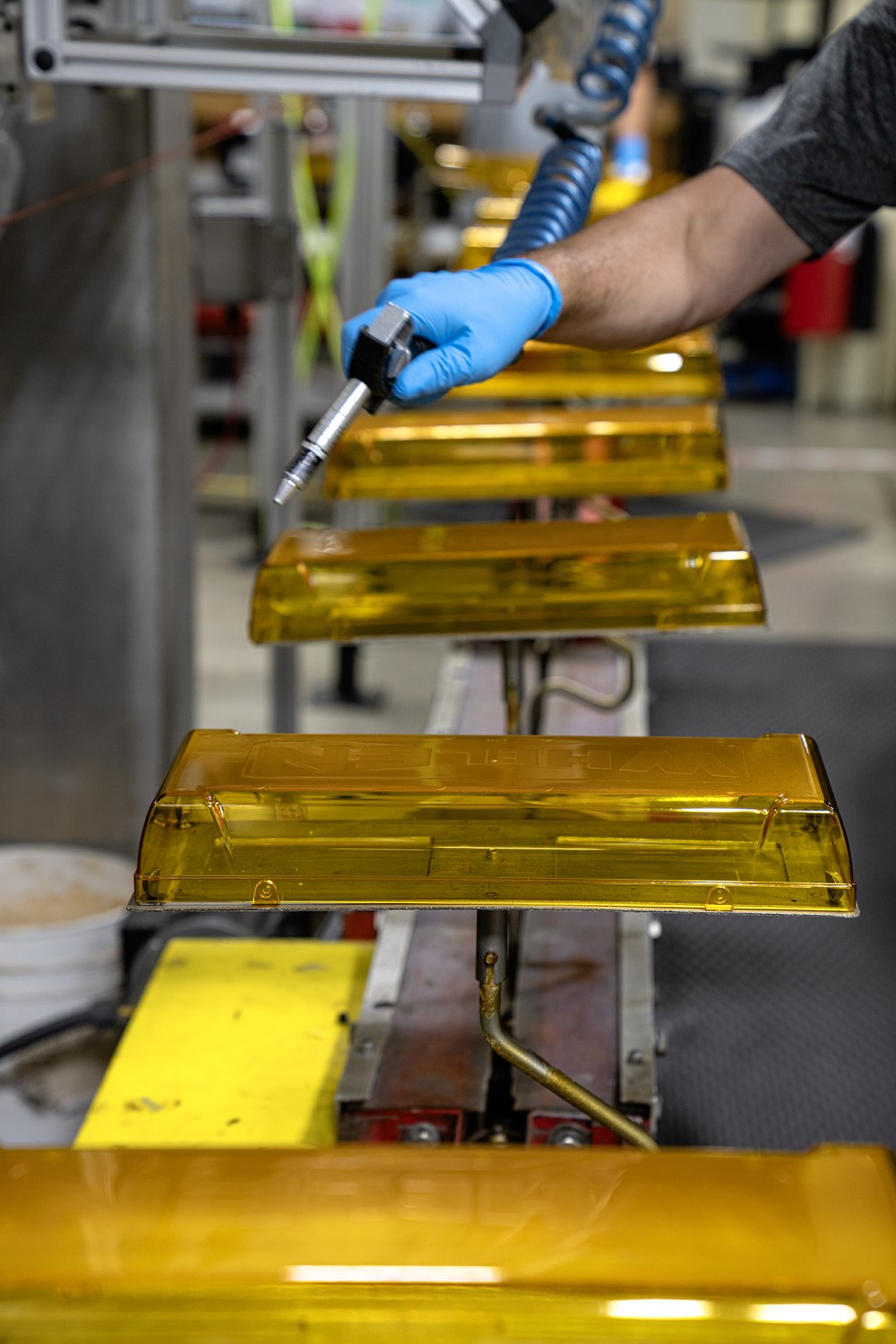Whelen’s Secret to Lens Longevity
Whelen products are manufactured in America, not just assembled here. Every step from initial design to hard coating to final assembly occurs on-site at one of our facilities. By maintaining complete control over production, and investing in innovative technology, we ensure that each product that goes out the door adheres to our high standards of quality. As a result, our lights maintain exceptional performance and visibility over others in the industry.
We’ve been hard coating our lenses for more than a decade—and we’re the first and only manufacturer in the industry to do this. Most of our products, like lightbars, lightheads, and scene lights, feature UV-resistant polycarbonate lenses but raw, injection-molded plastic begins to degrade when exposed to the environment. Hard coating provides added durability and reliability and counteracts the effects of environmental and chemical damage to our lenses and domes. The added protection increases the visual life of lights by 7 to 10 years, providing UV and scratch resistance against sun, salt, sand, and road chemicals. The hard coating material, which is infused into the lenses, guards against potential damage that could compromise the transparency of the lens.
Our hard coating process, seen in the video below, takes place in our facility in Charlestown, New Hampshire where the hard coat machine just underwent a major upgrade to make it more efficient. “The upgrade allows us to operate more efficiently and to integrate the latest generation of coating material into our process,” says Ethan Huffer, Manufacturing Engineering Manager in Charlestown, NH who oversaw the project. “The new hard coat material is two generations ahead of what we previously used, and lab testing proves it to have an increased durability and lifespan,” he added. It takes each lens 15 minutes to make it through the process and now, with the new upgrades, we can hard coat up to 45,000 lenses every 24 hours, and it’s more energy efficient.
The Hard Coat Process
- We begin by placing raw lenses and domes, composed of UV-resistant polycarbonate, onto custom fixtures in the loading area.
- In the cleaning station, the lenses are washed with isopropyl alcohol to clean their surface and remove any debris.
- The lenses then move into the spray off area to remove any static charge from their surface.
- Next, our six-axis robot uses an atomizing spray gun to apply the actual hard coat in a clean, stainless-steel environment, completely free from outside contaminants.
- Then, the infrared heating oven heats the lenses to 160°F, establishing a chemical bond and infusing the hard coat into the lenses.
- The lenses move to the UV lamp oven, which utilizes 20 high-intensity UV lamps to solidify the hard coat.
- Then, the lenses arrive in the unloading area, where a spectrometer measures the thickness of the hard coat.
- Finally, the lenses are inspected and sorted by our team.


We know it’s the details we put into every step of our manufacturing processes that distinguish our products as the best in the industry. We don’t focus on cost-cutting measures or overlook the significance of lens protection, instead, we prioritize the long-term functionality and reliability of everything we make. And by manufacturing our products from the ground up, not just assembling them, we control the quality of everything we make, and we continue to lead the way in revolutionizing emergency vehicle lighting solutions.



